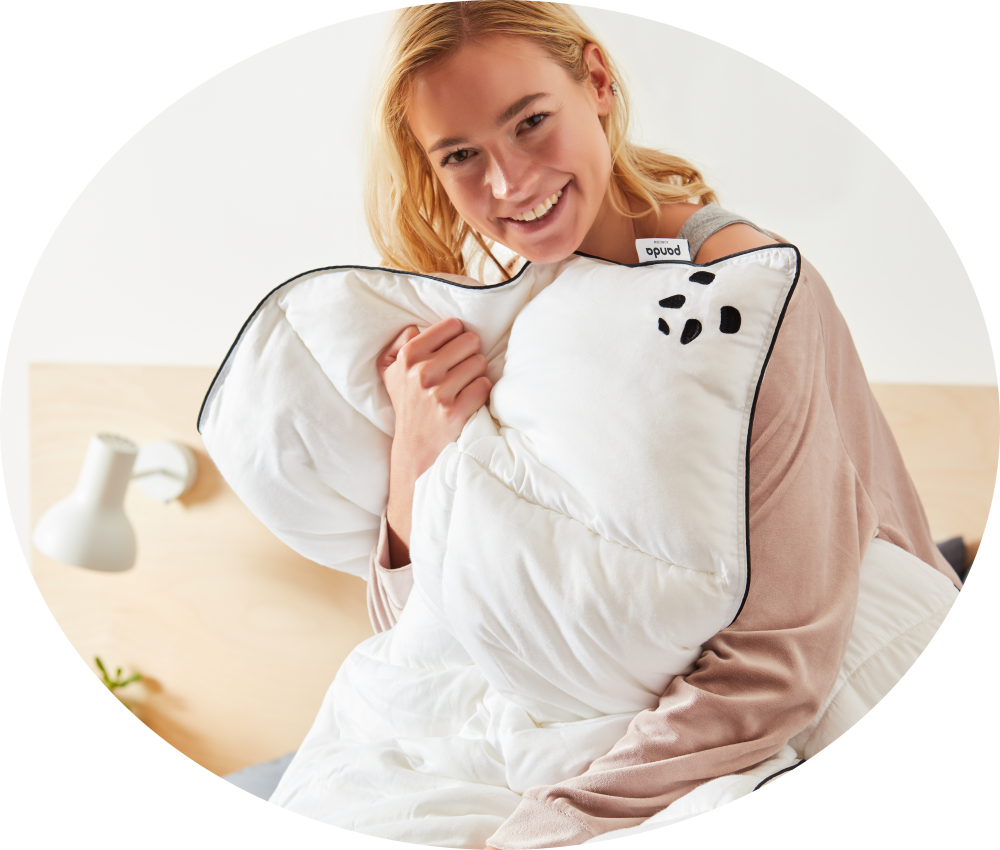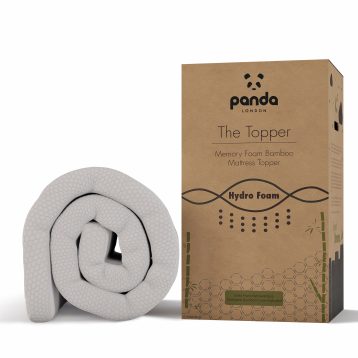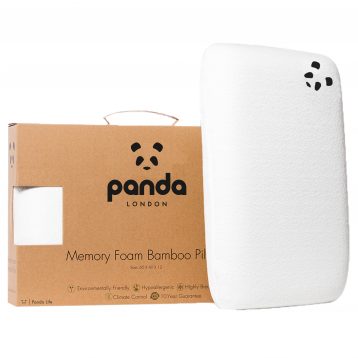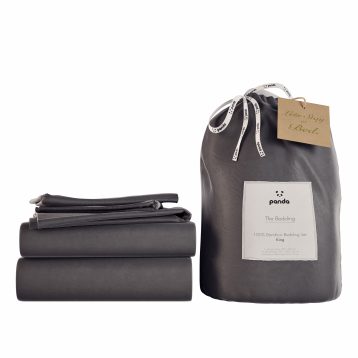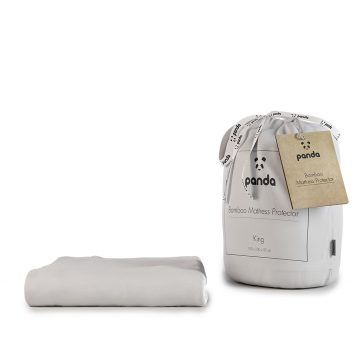How Do You Choose the Right Duvet for Your Bed?
Last updated on February 9th, 2024 at 12:35 pm
Selecting the right duvet is essential for a comfortable and restful night’s sleep. A duvet plays a significant role in regulating temperature, providing insulation, and adding a touch of style to your bedroom. There’s lots to consider, so let’s snuggle up and look at what you need to know to choose the right duvet for your bed. With this duvet-buying advice, you’ll be shopping like a pro.
Understand your bed and sleep needs
Before diving into the world of duvet options, it’s essential to understand your bed size and your personal sleep needs clearly. Knowing the size (single, twin, king, etc) and dimensions of your mattress will help you choose the appropriate duvet size, ensuring optimal coverage and comfort – if your duvet is too small, it will look out of place. And if it’s too big, things can get messy! Additionally, consider factors like your preferred sleeping temperature, your climate, any allergies or sensitivities, and whether you sleep alone or share the bed. Look at seasonal duvet recommendations, too, as the weather can change many things for you…
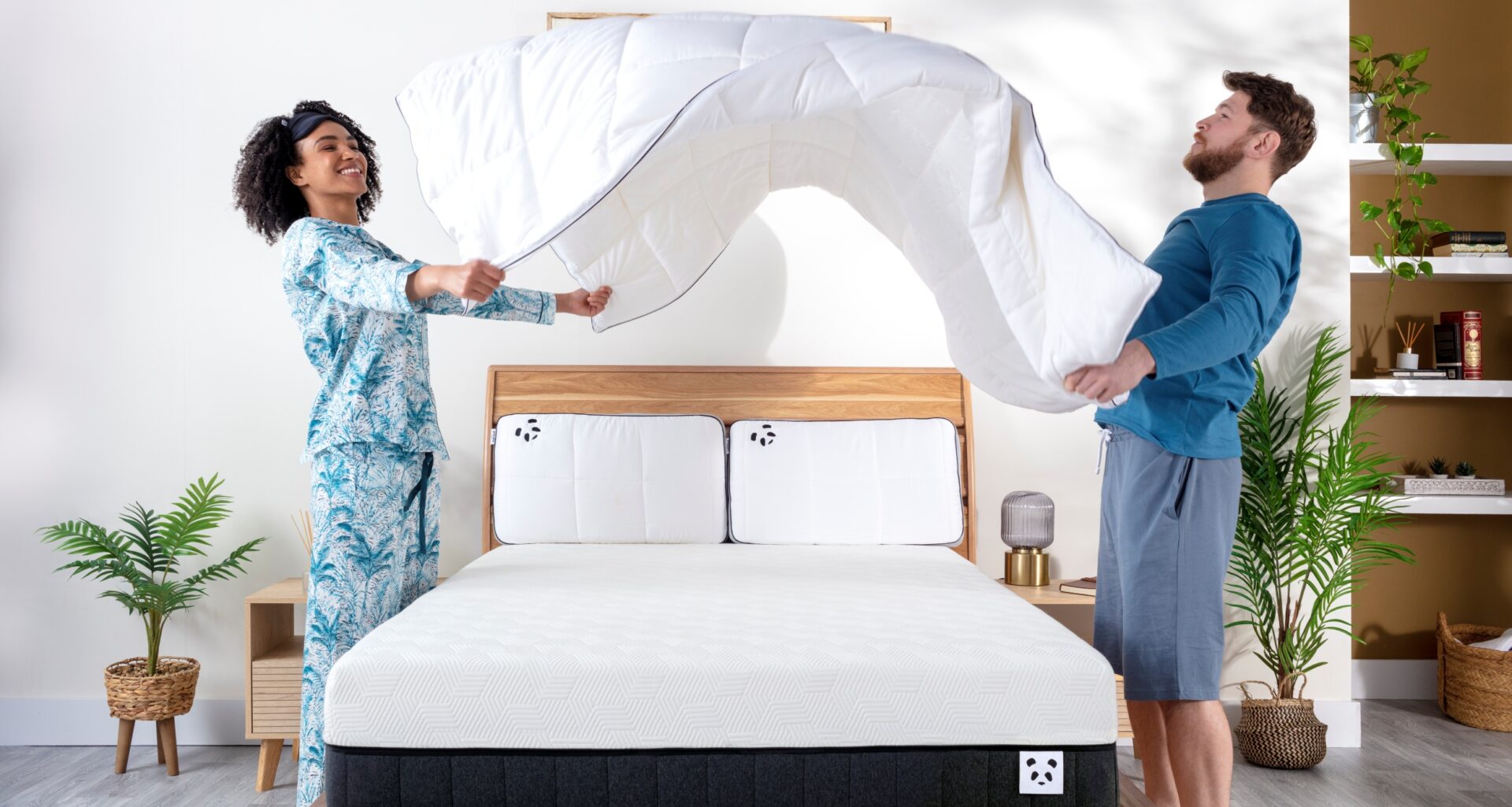
What duvet fill options are available
Duvets come in a variety of fill options, each with its own unique characteristics. Common fill types include down feathers, synthetic fills like microfibre or polyester, and natural fills like wool, silk or bamboo. Consider your personal preferences for warmth, weight, and any specific requirements when selecting the fill type that suits you best. There are pros and cons to all of them…
Down and feather duvet fills
These duvet fills are sure to keep you warm and toasty, so they’re perfect for the Winter – but you might find they’re too hot for you during the Summer months. Feather and down duvets are also not vegan-friendly due to their use of animal-derived materials, which might not align with your personal preferences.
Synthetic fills
Synthetic fills like microfibre and polyester are more budget-friendly options, which is great for students or if you’re just starting out. They are soft and lightweight but don’t always offer the thickness required for colder weather. Synthetic duvets aren’t the best in terms of environmental friendliness and often use harsh chemicals during production, so bear this in mind.
Natural fills
Other options for duvet fillings are the more natural materials: wool. Wool is a really thick and heavy filling, meaning it’ll keep you toasty during cold months. Wool-filled duvets are quite heavy but more breathable than down/feather duvets. Bamboo, too, is an option for a natural duvet fill: hypoallergenic, temperature regulating, and hypoallergenic.
Recycled fills
You’ll also find some recycled duvet fills on the market; here at Panda, our luxurious Cloud Bamboo Duvet is filled with a 50:50 blend of bamboo (of course) and our innovative Nano-Microfibre™ – made from recycled plastic bottles rescued from the ocean. This is one of the best duvet fill types out there!
What is a tog rating
The tog rating of a duvet refers to its ability to retain heat – it is a measure of insulation. The higher the tog rating, the warmer the duvet and the more cosy you’ll feel as you drift off at night. In warmer climates or for individuals who tend to sleep hot, a lower tog rating (around 4 to 7) is suitable, while in colder climates, those who prefer extra warmth may opt for a higher tog rating (around 10 to 13). Consider your local climate and personal thermal needs to select an appropriate tog rating for your duvet. Anything between 7 and 10 will prepare you for an excellent year-round sleep. Different duvet weight options are available, with higher-tog duvets being generally heavier – consider whether you want something weighty.
The Cloud Duvet
Light-as-air sleep, all year round
Duvet material and cover
The material and cover of a duvet contribute to its overall comfort and quality. Cotton and cotton blends are popular options for their breathability and durability, as well as how easily accessible they are. They allow for good air circulation and temperature regulation.
Hypoallergenic covers (like those made from bamboo!) are available for those with allergies or sensitivities. Bamboo offers many other benefits: it’s naturally antibacterial, moisture-wicking, and thermoregulating. Not only that, but it feels super soft too. It’s eco-friendly, allowing for natural luxury in your home.
Different cover materials require different maintenance techniques, so always check the manufacturers’ instructions to help your duvet live its best life.
How to maintain and care for your duvet
As mentioned, duvets can differ in how they’re best cared for; many can be machine washed, and it’s best to do so on a low setting with a mild washing powder – and definitely no bleach! Spot clean regularly to avoid putting it in the machine too often, and always dry on the line outside where possible. This will keep it super fresh. No bedding duvet guide would be complete without telling you to ensure you have a duvet cover, too; this will help protect your duvet from any spills or dirt, keeping it looking and working great for years to come.
Duvet size and fit
The first thing to consider when choosing your duvet is the size; if you have a king-size bed, you’ll likely want a king-size duvet. Some people opt for two singles when sharing a king-size bed, as it works better for them. Consider the bed duvet size chart when looking for your perfect duvet! Matching the size of your duvet to the size of your bed is much better for both comfort and aesthetics; not only will it help keep you cosy, but it’ll look much neater, too. The size is just as important as your bedding material choices.
Here is our duvet size chart:
| Bed Size | Duvet Size |
|---|---|
| UK Single | 135 x 200cm |
| UK Double | 200 x 200cm |
| UK King | 225 x 220cm |
| Super King | 260 x 220cm |
Matching your bedding
When you choose your duvet and get a duvet cover to go with it, be sure to match it to the rest of your bedding; purchasing a complete bedding set is the best way to go about it, ensuring everything looks coherent and lovely together. Add throw cushions, blankets, and other soft furnishings around the room to keep everything blended and looking tip top. There are some lovely duvet cover styles out there; patterned or plain, it’s up to you.
Budget considerations
As with all purchases you make around your house, there needs to be a balance between quality and budget. What you buy needs to be in your price range, but if you buy low-quality products, they’ll need replacing much faster. This leads to you spending more money over time! As stated, synthetic duvet fills are often the cheapest options – but they’re not the best for your skin or the environment. Look for deals or sales on naturally-filled duvets, and consider payment plans too.
Choosing the right duvet for you
The best duvet for your bed must fit your bed, keep you comfortable at night and don’t break the bank. It’s also worth considering personal preferences – are you a hot or cold sleeper, and do you like to have something heavier covering you as you sleep? No matter what duvet you choose, it needs to be just right for you… Hopefully, these duvet selection tips will help you make the perfect choice.
FAQ
How do I choose the correct size duvet for my bed?
Last updated on February 9th, 2024 at 12:35 pm
Measure your bed and compare it to standard duvet sizes. Ideally, your duvet should drape over the sides of the bed without touching the floor. Consider the bed size (twin, full, queen, king) and opt for a duvet that matches or slightly exceeds these dimensions for optimal coverage.
What does the 'tog' rating mean?
Last updated on February 9th, 2024 at 12:35 pm
The tog rating measures a duvet’s thermal insulation capacity. Lower tog duvets (1-7 tog) are cooler, making them suitable for summer, while higher tog ratings (10.5-13.5 tog) are warmer, ideal for winter. All-season duvets may offer a combination of adjustable tog ratings.
Can I use the same duvet year-round?
Last updated on February 9th, 2024 at 12:35 pm
Yes, if you choose an all-season bamboo duvet with an adjustable tog rating or if your home maintains a consistent temperature. Otherwise, consider having separate summer and winter duvets for optimal comfort.
How do I care for my duvet?
Last updated on February 9th, 2024 at 12:35 pm
Follow the manufacturer’s instructions. Many duvets are machine washable, but the filling type can affect the care process. Consider using a duvet cover to protect against dirt and spills, extending the life of your duvet.
Are there eco-friendly duvet options?
Last updated on February 9th, 2024 at 12:35 pm
Look for duvets with organic, sustainably sourced fillings, such as organic cotton or bamboo. Certifications like GOTS (Global Organic Textile Standard) can guide you to environmentally friendly choices.
How often should I replace my duvet?
Last updated on February 9th, 2024 at 12:35 pm
Every 5 to 10 years, depending on the quality and how well it’s maintained. Signs of wear, diminished warmth, or comfort indicate it’s time for a new one.
Explore our range:
Bamboo Mattress Topper
Rated 4.97 out of 5£84.96 – £204.00Memory Foam Bamboo Pillow
Rated 4.96 out of 5£44.95Original price was: £44.95.£38.21Current price is: £38.21.100% Bamboo Bedding
Rated 5 out of 5£16.96 – £153.00Bamboo Mattress Protector
Rated 5.00 out of 5£16.96 – £42.50

